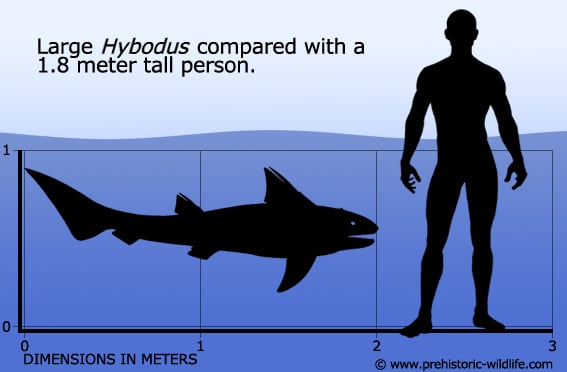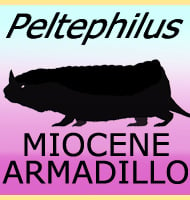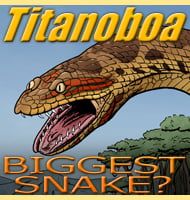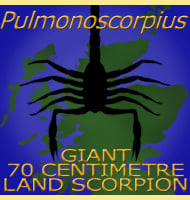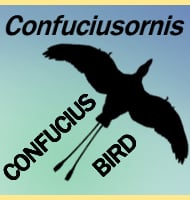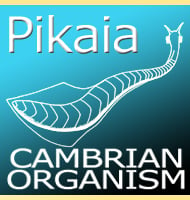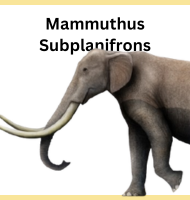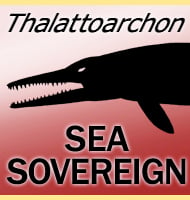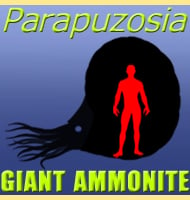In Depth
Hybodus is instantly recognisable by the spike that rises up in front of its dorsal fins. The purpose of this has been explained as a form of defence from larger predators to display. With fossils dating back from the end of the Permian to the early Cretaceous and a cosmopolitan distribution, Hybodus must have been a highly successful predator.
The teeth inside the mouth of Hybodus were arranged into two groups. At the front were sharper pointed teeth, very useful for seizing prey items like fish and squid. The teeth towards the back were more rounded, making them suitable for crushing the shells of crustaceans. Working together, the only animals that would not be on the menu were those too large to fit into its mouth.
Hybodus also displays sexual dimorphism in that males have a pair of ‘claspers’ on the underside of their bodies. These are used to transfer sperm into the females, and are still present in the sharks swimming the oceans today.
Sharks are all known to have cartilaginous skeletons which usually decompose upon death. Hybodus however seems to have had highly ossified cartilage making it more like solid bone. This has meant that impressions have been quite well preserved revealing the morphology of the living animal.
Many species have been attributed to Hybodus but only H. houtienensis is accepted universally. The validity of other species have been called into question by different sources, and further study of Hybodus is required for further clarification.
Further Reading
– Recherches Sur Les Poissons Fossiles. Tome III (livr. 8-9). Imprim�rie de Petitpierre, Neuchatel viii-72 – L. Agassiz – 1837. – Description of the Mouth of a Hybodus found by Mr. Boscawen Ibbetson in the Isle of Wight – Quarterly Journal of the Geological Society – Sir Philip Malpas de Grey Egerton, Bart. M.P. F.R.S. F.G.S. – A Tooth of Hybodus grossicornis from the Inferior Oolite – Nature 58, p390 – Thos. Beacall – 1898. – On A Dorsal Fin-Spine of Hybodus From Northwestern Kansu – Bulletin of the Geological Society of China vol 14, issue 1, p 53-55 – C. C. Young – 1935. – Cranial anatomy of the Lower Jurassic shark Hybodus reticulatus (Chondrichthyes: Elasmobranchii), with comments on hybodontid systematics. American Museum Novitates 2878:1-19 – J. G. Maisey – 1987. – On the Hybodus (Euselachii) from the Early Jurassic of Anina (Caraş Severin district, Romania) – Studia Universitatis Babeş-Bolyai, Geologia, 2006, 51 (1-2), 51 – 54 – Emanual Paul Dica & Vlad Codrea – 2006.
